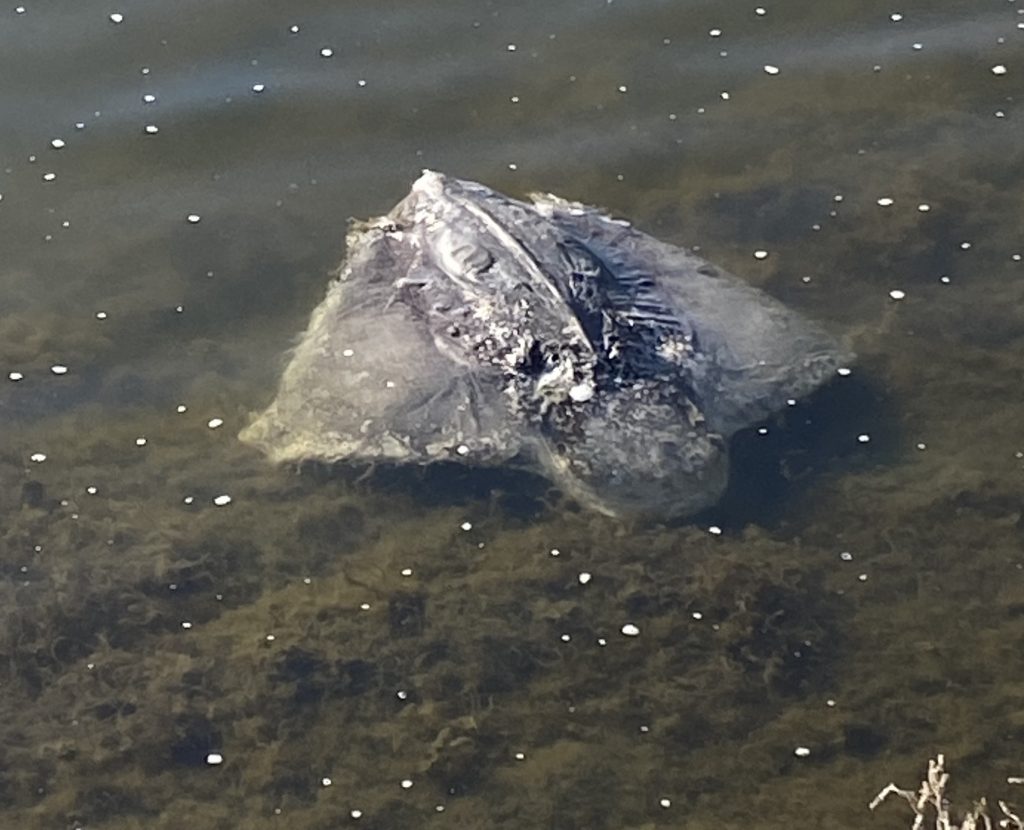During the week of February 6, 2023, a biologist from Shark Stewards recorded nearly 20 dead leopard sharks and bat rays at Aquatic Park, Berkeley. On the next day, a complete survey of the man-made lagoon was made, counting 41 dead leopard sharks and bat rays in the lagoon. One fresh specimen ws collected and sent to the California State Department of Fish and Wildlife pathologist for examination.
The Aquatic Park lagoon is a brackish water interior waterway separated from the San Francisco Bay by the 80 freeway corridor, and connected to the Bay by tidal tubes running beneath the freeway.
Last August, thousands of Bay fish including sharks washed up and died in Lake Merritt Oakland, and throughout the San Francisco Bay from conditions caused by an event called a Harmful Algal Blooms (HAB).
Baykeeper, a San Francisco Bay watchdog reported that the bay’s high levels of nutrients, mostly phosphorus and nitrogen, discharged from over 40 wastewater treatment plants catalyze the conditions for virus and bacterial proliferation. Longer days and warmer sea temperatures nurture the plant growth, and nutrients spur the proliferation. These nutrients can exacerbate Harmful Algal Blooms.
However, this recent die-off is during a period of cool waters, but also during a period of high run off into Aquatic Park and freshwater dilution of the confined water body.
In the spring of 2017, hundreds of leopard sharks (Triakis semifasciata) and bat rays (Myliobatus californica) washed up dead or dying on the San Francisco Bay shoreline. That event was the second year in a row of mass shark and ray death in the Bay, and the third major die-off since 2011, according to the California Department of Fish and Wildlife. In that case, hundreds of dead shark reports concentrated around Foster City and Redwood City, with additional reports from Hayward, Berkeley, Oakland, and San Francisco. According to pathologist Dr. Mark Okohiro with the California Department of Fish and Wildlife who examined the brains from the sharks, the causative agent was an amoeba Miamiensis avidus that enter via the nose and ear canals and infect the brain.
Tidal lagoons like Aquatic Park, Lake Merritt in Oakland, and those located off Foster City and Redwood City, are subject to polluted street runoff that includes human and animal waste. Periods of high rainfall, such as occurred in early February this year, can also create a lens of freshwater that can create low oxygen conditions and alter the pH of the lagoon. If the tidal gates are closed, fresh saline and oxygen rich seawater is not allowed to enter and mix with the water in Aquatic Park. A construction site located adjacent to the Park could also be a contributing factor.
This isn’t the first large scale leopard shark die-off in the San Francisco area. Die-offs in San Francisco first gained attention in 1967 when over 725 sharks and rays were recorded by East Bay Park’s biologist Ron Russo. Documented shark and ray die-offs occurred in 2002, 2006, 2011, 2016 and 2017. 2011 had the highest death toll according to Fish and wildlife records.

The Pelagic Shark Research Foundation reported stranded dead sharks in Redwood City, Foster City and a dead shark was reported in Novato to the north suggesting a wider scale disease event. Specimens have been submitted to the California Fish and Wildlife pathologist Dr. Mark Okohiro. The results have not been shared as of yet but Dr. Okihiro has stated he believes the pathogen, a mycobacterium, is the same as the 2017 event.
Sharks and rays belong to the group Elasmobranchii and do not have a swim bladder that helps them flow. Unless nearshore the fish sink and the deaths are not observed. Thus, the reported deaths of stranded sharks and rays are very likely underrepresented. Shark Stewards provided a fresh leopard shark specimen to Dr. Okohiro.
Our new project funded by a UC Berkeley Chancellor’s grant is monitoring the east Bay shoreline for dead sharks and is conducting water testing and monitoring the tidal gates to ensure fresh seawater is entering Aquatic Park. We are also working with the City of Berkeley Department of Parks and Recreation to test for enterococcus associated with run off, and conducting park cleanups with our students and volunteers.
Report a stranded or dying shark in California below, call or text the California Department of Fish and Wildlife’s CalTIP hotline. You can also take a picture and upload it iNaturalist, where it will be added to a project tracking leopard sharks and bat rays around the Bay.